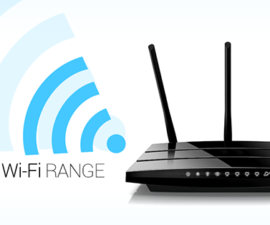You’ve probably seen movies and read articles featuring nanotechnology. However, do you understand nanoscience and nanotechnology? Can you say that, even with an accounting background and experience in CRA audit procedures, you understand the basics of nanotechnology?
You may wonder why we are taking time to look at this seemingly complicated subject. But, looking at the technological trends powered by the cyberinfrastructure, nanotechnology is the doorway to discoveries, learning, innovations, and engagement in this, and other fields. Perhaps this could be the technology needed for the discovery or medical interventions for some of the hard-hitting diseases.
What is nanotechnology/ nanoscience?
It is the understanding and the utilization of matter at its atomic and molecular states. One nanometer equals one billionth of a meter.
Nanotechnology delves into the developing materials, devices, and structures whose two dimensions are between 1 and 100 nanometers in size.
Nanoscience is breaking barriers thanks to its fascinating nature with scientists and engineers learning more about this branch of science to make smaller gadgets, like transistors that run faster, use less power, or even get to space.
Nanotechnology is shaking the lives of material scientists, biologists, engineers, and chemists.
As this technology evolves and develops, its use has increased in medicine, information and communication, energy, and consumer goods, among other places.
How did nanoscience start?
Concepts and ideas of nanoscience plus nanotechnology started when a scientist, Richard Feynman at an American Physical Society talk entitled “There’s Plenty of Room at the Bottom” that took place at the California Institute of Technology in 1959. While it still seems like an alien subject, Feynman described nanotechnology as the process through which scientists could manipulate and control individual atoms plus molecules. Through his explorations of ultraprecision machining, Professor Norio Taniguchi came up with the term nanotechnology. Nanotechnology became real in 1981when molecules and atoms could be visualized.
Benefits and applications of nanotechnology
- Clear nanoscale films on camera displays, eyeglasses, and computers as well as windows and other surfaces. The nanotechnological applications applied to these surfaces make the surfaces residue-repellant, water-repellant, self-cleaning, antireflective, antimicrobial, antifog and electrically conductive. It is also responsible for infrared and ultraviolet light or scratch resistance.
- Nanoscale additives or surface treatment on fabrics result in lightweight ballistic energy deflection in most personal body armor. It helps to resist staining, bacterial growth or wrinkling.
- It is also applied in the lightweighting of trucks, cars, boats, airplanes and space crafts for fuel efficiency,
- It is also used to enable materials / smart fabrics to become washable and durable.
- Fuel generation from ethanol through the bioengineering of enzymes to convert cellulose from corn stalks or wood chips and grasses into ethanol.
- Nanoparticles are used as catalysts in chemical reactions.
- The technology also makes premium quality household products like stain removers and degreasers. It is also utilized in the development of antibacterial cleaners, air filters/ purifiers, sensors, and specialized paints.
- Nanotechnology is also incorporated in personal care products for a boost in performance.
- In the IT and electronics world, nanotechnology is applied in transistors, Magnetic Random Access Memory (MRAM), ultra-high definition displays and TVs, as well as bendable/ stretchable and foldable electronics.
- The medical field is also benefitting from nanotechnology. Commercial applications include the use of gold nanoparticles as probes used in the detection of targeted sequences in nucleic acids. Nanotechnology also provides better imaging and diagnosis. The treatment of atherosclerosis also employs nanotechnology. Lastly, nanoparticles help in the delivery of medication directly to cancer cells.
With more applications in these areas, as well as environmental remediation and energy, only time will tell how fast nanotechnology will be fully immersed in the general population.














![How to Fix Outlook [pii_email_e52fa7bb6627584ed378] Error Code](https://ukrdengi.com/wp-content/uploads/2021/08/error-270x225.jpg)